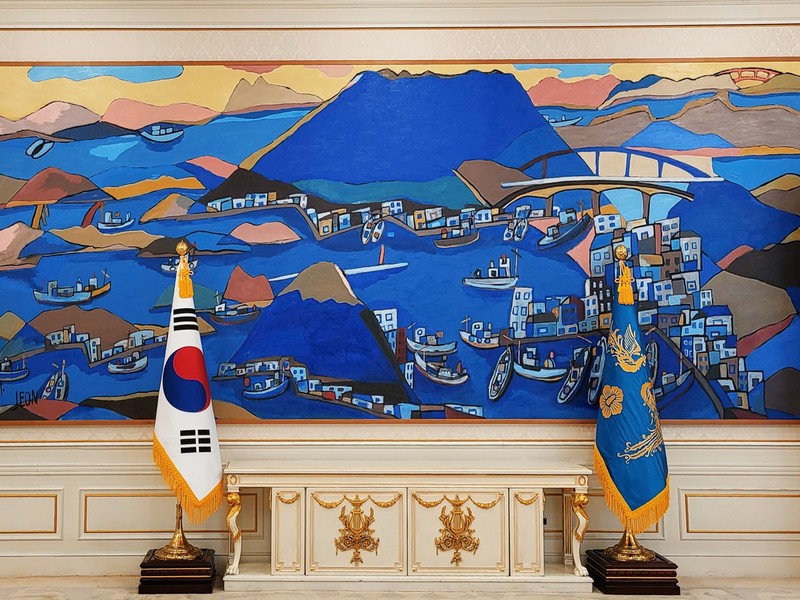As for the reccomendations, I like being specific and my answer would vary depending on your travel preferences (eg: if you prefer visiting historic landmarks or exploring nature, or want to experience Korean urbanism like shopping or night lift), as well as your preferred activity (as in, the limit of what you are okay with in terms of physical activity. I wouldn't suggest someone who doesn't like trekking/hiking to go to the mountains, you know). Also important is when you're planning your visit.
It would also depend on who you are travelling with (there's a general preference that differs depending on traveler's age and gender, from my experience. Also, if you've got kids, some places are not recommendable), your past experience travelling the region (as in if you've been to Taiwan or Japan, or China) and the duration of stay.
Of course, I could understand that these might be too specific of a personal information to disclose, to please tell us only as much as you feel comfortable telling. Also, it is important to note that what is implied by "tourists". If you mean tourists in general, there wouldn't be much, if at all, places to recommend. If you only mean foreigners and are okay with seeing Korean domestic tourists, there might be a few since frankly, most foreign tourists only go to Seoul (and to a certain extent to Jeju, especially the Chinese tourists).
Assuming that you like visiting historic locations, like nature, have no problem being a bit sweaty, are not accompanying small kids, staying for around a week and are open to getting away from Seoul, my first recommendations would be Gyeongju and hiking Korean mountains.
Gyeongju is one of the most if not the most famous tourist destination amongst Koreans but not as well known to foreigners. It's got quite a few things to look for since it has been the capital for one of the historical kingdoms, and is still relatively well reserved to this day. On a related note, if you look up some place in Youtube and don't find much tourist videos for that place in English, it's generally a good sign that there wouldn't be much foreign tourists.
In terms of historic importance and general experience, Haeinsa also might be a good choice where Tripitaka Koreana is located. There's a special tour program which lets tourists actually go inside the storage building each Sunday. Though this program needs one to reserve their spot, and there's no spot left until May. (There also seems to be a tourist guide program, but I don't know how good they are
https://www.travelokorea.com/sightseeing/hapcheon-packages/)
Since Korea is very mountainous geographically, means there are quite a few that are worth a visit and they have its own charm. Generally, national parks are all great, but I would especially recommend Seoraksan and Jirisan for it's beauty. Korea mountains are especially recommendable during fall season, since it becomes very colorful and Naejangsan is especially recommended during fall season. Also, quite a few of historic buddhist temples are located within mountains, so depending on the mountain, you'll be able to visit authentic temples all the while hiking and enjoying the scenery. Personally, I also like Daegwallyeong as well. It's a mountain pass that feels very open with quite a view, although the scenery of the landscape itself pales a bit compared to the mountains I've mentioned before. Though it has an advantage that it's much more accessible with a car.
Coastal national parks are also worth a visit, but since Philippines is full of beautiful coastal landscape itself, I'm not sure how interesting that would be for you.
Most other authentic Korean historic landmarks are concentrated in Seoul, since it has been the Korean capital for such a long time (a lot of the other important historical and cultural landmarks are in Northern half of the peninsula, unfortunately) and they are generally well known to foreign tourists, so it wouldn't meet the criteria of a "relatively unknown" destination of yours.
Though I these kind of well known destinations are still worth a visit, just like how Roman Forums in Rome, National Gallery in London, Edinbrugh of Scottland, Pergamon in Berlin, Hagia Sophia in Istanbul, etc are very much worth a visit despite the amount of tourists who visit there.













